Last Updated on April 28, 2025
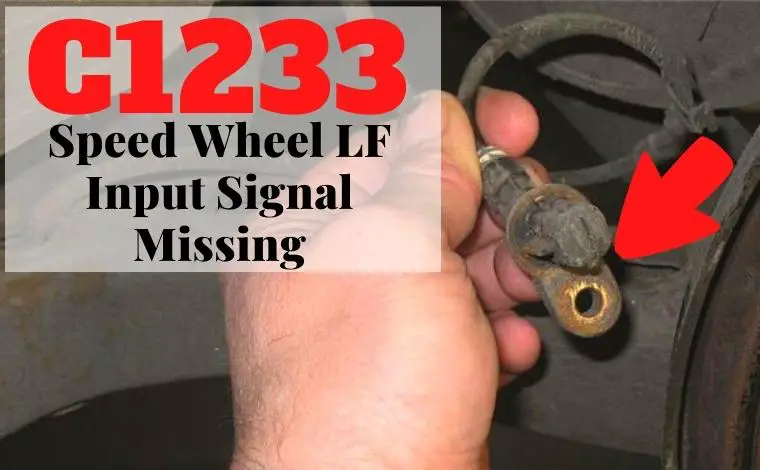
The OBD II system plays a vital role in diagnosing and addressing various vehicle issues. Among these trouble codes, C1233 specifically relates to a problem with the left front wheel speed sensor. When you encounter the C1233 code, it means the ABS (Anti-lock Braking System) is not receiving a signal from the left front wheel sensor. The ABS system is critical for ensuring safe and effective braking, especially in slippery or emergency conditions. A missing or faulty signal can compromise your car’s ability to maintain traction and control. Recognizing and diagnosing this code early prevents further complications and maintains your vehicle’s safety. The first step is detecting the ABS warning light, followed by using an OBD II scanner to read the code. Once confirmed, proper repair steps must be taken immediately to restore optimal vehicle performance and safety.
Symptoms of C1233 Trouble Code
When your vehicle’s OBD II system detects the C1233 trouble code, it often presents noticeable symptoms. Recognizing these signs early helps prevent further damage and ensures timely repair. The most common symptom is the ABS warning light illuminating on the dashboard. Additionally, you may experience traction control system malfunctions, meaning your vehicle might struggle to maintain grip in slippery conditions. Another symptom is speedometer issues, where the speed reading may be inaccurate or fluctuate unexpectedly. Increased braking distances are also common, making it harder to stop your vehicle quickly during emergencies. Finally, you might notice a loss of anti-lock braking system functionality, significantly affecting your safety during hard braking. Paying attention to these symptoms is crucial because they indicate your braking system’s effectiveness is compromised, potentially leading to dangerous situations if not addressed promptly.
Possible Solutions for C1233 Code
Fixing the C1233 code involves several possible repair steps. The first solution is to inspect and clean the left front wheel speed sensor and its connectors. Dirt, debris, or corrosion can easily disrupt the sensor’s performance. If cleaning does not resolve the issue, the next step is to replace the faulty wheel speed sensor entirely. Additionally, you should inspect and repair any damaged wiring or connectors related to the sensor, as broken or frayed wires can interfere with signal transmission. Proper sensor alignment must be verified because a misaligned sensor will fail to read wheel movement accurately. Check the tone ring (reluctor ring) for physical damage or debris buildup that could distort readings. Also, inspect the wheel bearing condition, as bearing failure can impact sensor function. In rare cases, updating the ABS module software or replacing the ABS control module may be necessary to resolve persistent issues.
What Is the Left Front Wheel Speed Sensor?
The left front wheel speed sensor is a vital component of your vehicle’s Anti-lock Braking System (ABS). Often referred to simply as an ABS sensor, it measures the rotational speed of the left front wheel and sends this information to the ABS control module. The sensor is typically located near the brake rotor on the front wheels. It works by detecting changes in the magnetic field created by the tone ring attached to the wheel. If there is a discrepancy in the readings from this sensor compared to others, the ABS module may detect a fault and trigger the C1233 code. For the rear wheels, the sensors are usually found near the axle housing. Maintaining the proper function of the left front wheel speed sensor is critical for ensuring that the ABS can intervene correctly during hard braking situations, helping you maintain steering control and vehicle stability.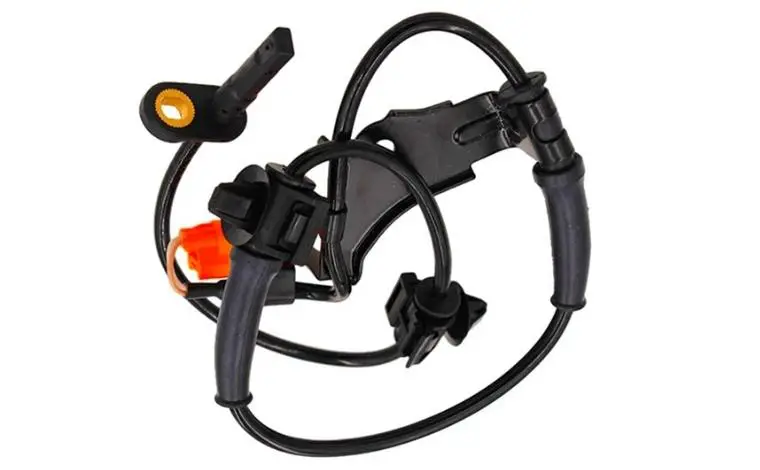
How Can the Input Signal of the Left Front Wheel Speed Sensor Be Missing?
The input signal from the left front wheel speed sensor can be missing due to several reasons. Primarily, the sensor relies on detecting the magnetic field changes produced by the tone ring as the wheel rotates. If there is damage to the sensor, tone ring, or associated wiring, the sensor will fail to generate or transmit a proper signal. In addition, corrosion, dirt, or debris buildup around the sensor or tone ring can interfere with signal transmission. Sometimes, improper installation or misalignment of the sensor can also cause signal loss. Furthermore, if the ABS module itself malfunctions, it may not correctly interpret the signals being sent, triggering a fault code. Since the ABS module uses these signals to calculate wheel speed and modulate braking force, any interruption compromises the system’s effectiveness, causing the ABS light to turn on and the C1233 code to appear during a diagnostic scan.
Common Causes of the C1233 Trouble Code
Several issues can lead to the C1233 code being triggered. Damaged wheel speed sensors are among the most common causes; physical damage, corrosion, or wear can prevent the sensor from accurately reading wheel speed. Failed ABS control modules can also cause signal interpretation issues, resulting in erroneous codes even if the sensors are fine. A damaged reluctor ring, which the sensor monitors, may provide faulty readings or no readings at all. Accumulated debris on the reluctor ring can block the magnetic signal the sensor needs to detect. Damaged wiring or poor electrical connections can interrupt the signal path from the sensor to the ABS module. Additionally, mechanical failures like wheel bearing problems can alter the alignment or spacing between the tone ring and the sensor, affecting performance. Understanding these common causes is critical for efficient troubleshooting and effective repairs, ensuring your braking system functions properly and safely.
Damaged Wheel Speed Sensor: A Closer Look
A damaged wheel speed sensor is one of the leading causes of the C1233 trouble code. These sensors are often exposed to harsh road conditions, including dirt, debris, water, and extreme temperatures, making them vulnerable to damage. A cracked or broken sensor can fail to detect wheel movement accurately, causing missing input signals to the ABS module. Physical impacts, such as hitting potholes, curbs, or road debris, can damage the sensor’s housing or internal components. Electrical failures inside the sensor due to wear and tear over time can also prevent it from functioning correctly. When a wheel speed sensor is damaged, you may notice symptoms like ABS warning lights, traction control system faults, and longer stopping distances. Replacing a faulty sensor promptly is essential to maintain optimal braking performance and ensure that the ABS can intervene effectively when necessary, especially during emergency braking or slippery conditions.
Failed ABS Control Module: Why It Matters
The ABS control module is the “brain” of the anti-lock braking system, interpreting signals from each wheel speed sensor to determine how much braking force to apply. If the module fails, it can misinterpret or lose signals, leading to trouble codes like C1233 even if the wheel sensors themselves are functioning correctly. Causes of ABS module failure include electrical issues, internal corrosion, water intrusion, or software errors. Symptoms of a failed ABS module include an illuminated ABS light, unresponsive braking during hard stops, and inconsistent traction control. In rare cases, your vehicle may even lock the wheels during hard braking, increasing the risk of accidents. Diagnosing a failed ABS control module requires professional diagnostic tools that can check module functionality directly. Repairing or replacing the module is often necessary to restore full braking system functionality. Regular maintenance and addressing sensor faults early can help extend the life of the ABS control module.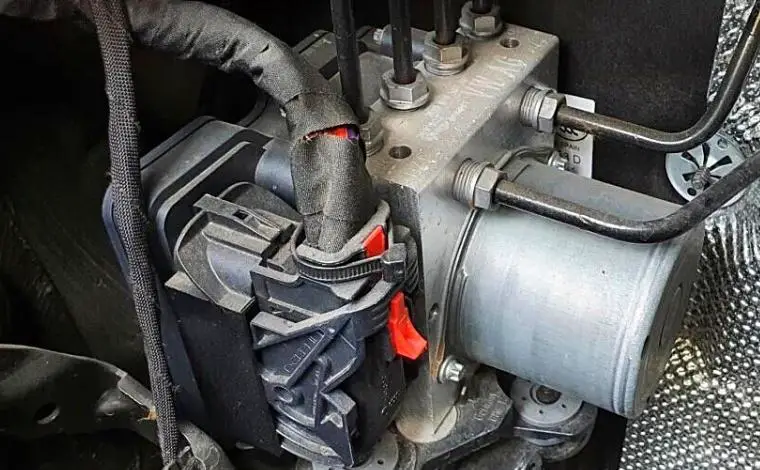
Damaged Reluctor Ring and Its Effects
The reluctor ring, also known as the tone ring, is a critical component in the ABS system. It is mounted on the wheel or axle and features teeth or notches that the wheel speed sensor reads. When the ring becomes damaged, cracked, or missing teeth, the sensor cannot generate a consistent or correct signal. Damage to the reluctor ring can occur due to corrosion, physical impacts, poor manufacturing quality, or wear over time. A damaged reluctor ring can cause erratic ABS behavior, incorrect wheel speed readings, and trigger the C1233 code. As a result, the ABS may activate unnecessarily or fail to intervene when needed, compromising vehicle control. If diagnosed, replacing a damaged reluctor ring is crucial. Neglecting this issue can increase the risk of braking system failure, especially during emergency stops. Regular inspection during brake maintenance can help catch reluctor ring issues before they escalate into severe safety hazards.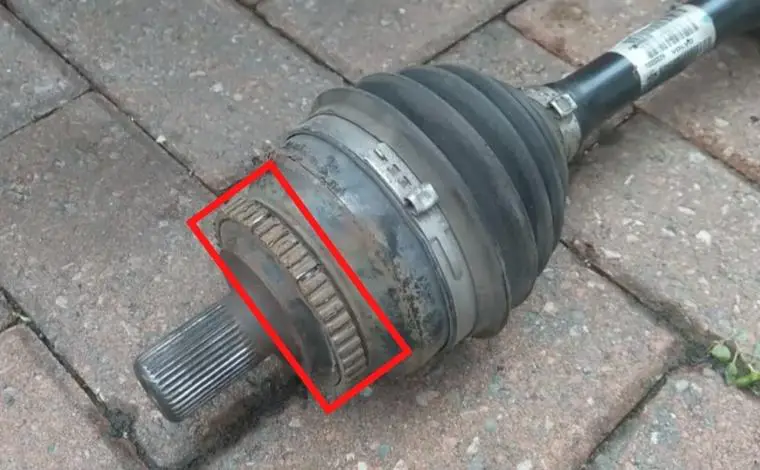
The Problem of Debris Gathering on the Reluctor Wheel
Debris accumulation on the reluctor wheel is a common but often overlooked cause of the C1233 trouble code. Over time, dirt, mud, snow, ice, and other road debris can build up on the reluctor ring, obstructing the wheel speed sensor’s ability to read wheel rotation accurately. The magnetic field between the reluctor ring and the sensor can be disrupted even by minor debris accumulation, resulting in an incomplete or erroneous signal to the ABS control module. As a result, the ABS warning light may turn on, and the vehicle’s braking efficiency may decline. In severe cases, the vehicle may experience uneven braking, traction control failure, or even complete ABS shutdown. Regular cleaning of the wheels, especially during winter months or after off-road driving, is crucial to prevent debris buildup. A simple cleaning of the reluctor wheel may resolve C1233-related issues without needing costly part replacements, highlighting the importance of preventive maintenance.
Detailed Symptoms of the C1233 Trouble Code
Recognizing the symptoms of the C1233 trouble code is critical for ensuring timely repairs. When the left front wheel speed sensor malfunctions, your vehicle will exhibit several noticeable signs. The ABS warning light is usually the first alert on your dashboard, signaling that the Anti-lock Braking System has detected a fault. In addition to the ABS light, you may notice a traction control warning light or experience traction loss during acceleration or braking on slippery surfaces. Your speedometer might behave erratically, displaying inconsistent speeds or not functioning at all. Furthermore, the vehicle’s stopping distance could increase dramatically, making emergency braking risky. Another symptom is the complete or partial loss of ABS functionality, meaning the wheels could lock up during sudden braking. Recognizing these symptoms early and scanning the vehicle with an OBD II scanner to confirm the C1233 code can help prevent accidents and maintain the safety of your driving experience.
ABS Light On: What It Means
The ABS light is one of the first indicators that your vehicle’s braking system needs attention. When you see the ABS light illuminated on your dashboard, it means the system has detected an abnormality, such as the C1233 trouble code linked to the left front wheel speed sensor. The ABS system is designed to prevent wheel lockup during braking, particularly in slippery or emergency situations. When the ABS light comes on, it disables the anti-lock feature, though regular braking may still function. However, the loss of ABS can significantly reduce your control over the vehicle during sudden stops. The ABS light is a crucial warning that something within the system requires immediate inspection and repair. Ignoring the ABS light can lead to unsafe driving conditions and may result in more costly repairs later. Therefore, it’s essential to diagnose the cause of the ABS light promptly when it appears.
Engine Light On: Another Important Signal
While the ABS light is the primary indicator for braking issues, the check engine light may also turn on when the C1233 code is present. Although the check engine light typically points to engine and emissions-related problems, many modern vehicles integrate the ABS system with the engine control module. If the system detects a major fault such as missing wheel speed sensor input, it can trigger the check engine light to alert the driver. When both lights are on simultaneously, it signifies that the issue might be affecting not just the braking system but the vehicle’s overall performance. An activated check engine light combined with braking issues means the situation is more urgent than it might initially seem. Using an OBD II scanner to read and confirm the C1233 code allows you to address the root cause immediately and restore the vehicle to safe operating conditions, avoiding further complications.
Diagnosing the Cost of the C1233 Code
When diagnosing the C1233 trouble code, the associated cost can vary based on several factors. The location where you service your vehicle plays a big role, as labor rates are typically higher in metropolitan areas compared to smaller towns. Your vehicle’s make, model, and year also affect the diagnostic process—luxury or advanced vehicles often require specialized tools and expertise. On average, diagnostic costs start around $70 and can go up to $150 or more, depending on the complexity of the issue. If repairs are necessary, additional costs for parts like a new wheel speed sensor ($50–$150) or a reluctor ring ($30–$100) will apply. In rare cases where the ABS control module needs replacing, the expense can range from $300 to $1,000. It’s crucial to address the diagnosis and repair promptly, as ignoring the C1233 code could lead to expensive secondary damage and safety risks.
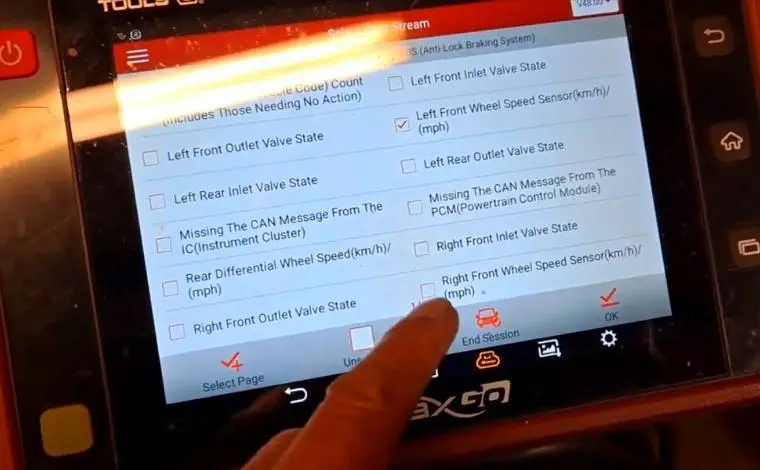
Can I Remove the C1233 Code by Exchanging the RF and LF Wheel Harness?
A common misconception among vehicle owners is that exchanging the Right Front (RF) and Left Front (LF) wheel harnesses might clear the C1233 code. Unfortunately, swapping the harnesses will not solve the problem. The issue lies in the faulty left front wheel speed sensor or related components, not the harness location. If you exchange the harnesses, you’ll only switch the position of the wiring, but the sensor’s malfunction will still exist. The OBD II scanner will continue to detect the missing or faulty input from the left front wheel. To fix the C1233 code, you need to repair or replace the defective wheel speed sensor, inspect and repair damaged wiring, or address any mechanical issues like a damaged reluctor ring or wheel bearing. Proper diagnostics and targeted repairs are necessary to clear the code effectively and ensure your ABS and traction control systems operate safely and reliably.
Preventive Maintenance Tips for Wheel Speed Sensors
Preventive maintenance of your wheel speed sensors is vital to avoid encountering trouble codes like C1233. First, schedule regular inspections of your ABS sensors and associated wiring, especially during routine brake service or tire rotations. Clean the sensor area to prevent debris buildup, which can interfere with signal transmission. Ensure that your reluctor rings are free from corrosion and physical damage, as these play a critical role in sensor functionality. Protect wiring from moisture and road salt exposure by checking for cracks or breaks in insulation. When replacing brake components, always verify the correct positioning of the wheel speed sensors to prevent misalignment. Using a high-quality scan tool periodically to check ABS codes can catch minor issues before they escalate. Preventive care ensures your ABS and traction control systems function flawlessly, maintaining vehicle safety. Neglecting maintenance can lead to unexpected failures, costly repairs, and dangerous driving conditions.
FAQs About the C1233 Code
1. Can I drive my vehicle with the C1233 code active?
While it may be possible to drive with the C1233 code active, it’s not safe. Your ABS system will be compromised, meaning you may not have proper anti-lock braking during emergency stops. Address the issue as soon as possible to avoid dangerous situations.
2. Will clearing the C1233 code with a scanner fix the problem?
Clearing the C1233 code without repairing the underlying issue will only temporarily erase the warning. If the left front wheel speed sensor is still malfunctioning, the code will reappear after driving a short distance. Proper repairs are necessary to permanently resolve the problem.
3. How long does it take to fix a C1233 code?
The time to fix a C1233 code depends on the cause. Simple sensor replacement can take under an hour, while diagnosing wiring or ABS module issues might take several hours. Plan for a half-day repair window if professional diagnostics are needed.
4. Is it expensive to fix the C1233 trouble code?
Repair costs can vary. A new wheel speed sensor typically costs between $50 and $150, plus labor. If wiring repairs are needed, costs can increase slightly. ABS module replacements are rare but costly, ranging from $300 to $1,000 including installation.
5. What happens if I ignore the C1233 trouble code?
Ignoring the C1233 code can lead to loss of ABS functionality, reduced traction control, longer stopping distances, and a higher risk of accidents, especially on slippery roads. Timely repair not only ensures your safety but also prevents more expensive future damage.
Final Thoughts on the C1233 Code
Understanding and addressing the C1233 trouble code is crucial for maintaining the safety and performance of your vehicle. The left front wheel speed sensor plays a vital role in your vehicle’s ABS and traction control systems. When the input signal from this sensor is missing, the risk of braking failure increases significantly. Early recognition of symptoms such as ABS and traction control warning lights, irregular braking behavior, and inconsistent speedometer readings is essential. Proper diagnosis, repair, and preventive maintenance can restore your vehicle’s safety features to full functionality. Whether it’s cleaning the sensor, replacing damaged components, or updating the ABS module, taking action ensures peace of mind on the road. Never underestimate the importance of a healthy braking system—it can be the difference between a near miss and a serious accident. Address C1233 issues promptly to maintain optimal driving confidence and safety for yourself and others.
Kevin Nicholas is an automotive technician who is a genius at software and hardware-related issues. He manually tested more than a hundred OBD scanners and gave his honest opinion on whether the device was worth the money or not. His in-depth OBD review articles help people choose the right product, whether it is a European, American, or Asian vehicle. He completed his Automotive Specialized Training Course at Universal Technical Institute and has more than 15 years of experience in the field.
